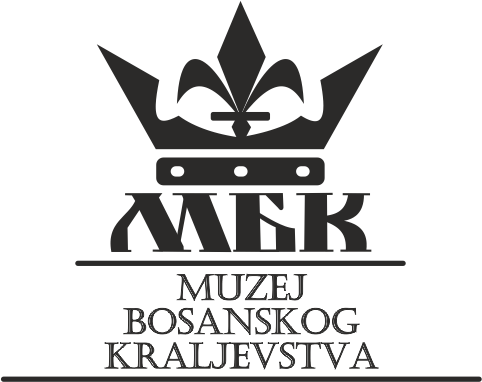Hrvatin Stjepanić (13th century – no later than 1315) was the son of Prince Stjepan. He had three sons, Vukoslav, Pavle, and Vukac. He was the nobleman after whom the noble kindred of Hrvatinić is named. He was first mentioned in the charter of Neapolitan King Charles II issued on June 14, 1299 in Naples, which confirmed his possessions in Donji Kraji. Prince Hrvatin received it as a reward for his support of the Neapolitan side in the struggle for the Hungarian throne, in which he got involved together with his relatives Šubići of Bribir. In response to this, the Hungarian king Andrew III ravaged his possessions as a sign of revenge.
As Prince Hrvatin appeared on the historical stage at a time when the Bribir princes controlled a large part of Bosnia at the expense of ban Stjepan Kotroman, Pavao of Bribir is referred to as “ban of Croatia and Dalmatia and lord of Bosnia” in the charter dated April 7, 1299. Thus, Prince Hrvatin acts as a vassal of the Bribirians and, following their policy, supports the Neapolitan dynasty in the fight for the Hungarian crown. Thus, Ban Pavle issued him a charter on February 2, 1301, ensuring his safety in return for his faithful service. In spite of the good relations between Prince Hrvatin and the princes of Bribir, an open conflict soon occurred in which Pavle’s brother, Prince Mladen, attacked his possessions. The reasons for the conflict should probably be sought in the change in political course of Prince Hrvatin, who began to support the opponents of his lords, despite older historiography presenting this confrontation as a religious war aimed at destroying heretics in Bosnia, including Hrvatin and members of his family. Reconciliation between the warring parties was reached in 1304, when the people of Bribir guaranteed the security and protection of the property of Hrvatin, his brothers and descendants by a charter. In 1315, another charter with similar content was issued, which is also the last surviving evidence regarding the actions of Prince Hrvatin, considering that in the charter from 1315 he was addressed as deceased, so the year of his death should be determined between these two occasions. There is another written trace of Prince Hrvatin in addition to the aforementioned charters. Namely, in Osretek near Kulaš, a stone inscription preserved in a fragment was found, which testifies that the prince had his own scribe (“se pisa dijak kneza Hrvatina”).
Prince Hrvatin’s possessions are not known in detail, but it is known for certain that he ruled the county of Banica with town Ključ, after which ban Stjepan Kotromanić called him “Ključki” in the charter issued to his son Vukoslav Hrvatinić. Furthermore, it is believed that the home territory of the Hrvatinić family, which they originally ruled, was the Lušci county, located around the source of the Sana River, so it could also be considered one of the possessions of Prince Hrvatin.
Bibliography:
- Brković, Milko: “Tri povelje knezova Bribirskih izdane bosanskom knezu Hrvatinu Stjepaniću”, Radovi Zavoda za povijesne znanosti HAZU u Zadru 32, Zadar, 1990, 139-154.
- Ćošković, Pejo: “Hrvatinići”, Hrvatski biografski leksikon,
https://hbl.lzmk.hr/clanak.aspx?id=89 (16.05.2022.).
- Isailović, Neven: “Povelja bana Pavla Šubića i njegovih sinova knezu Hrvatinu Stjepaniću”, Građa o prošlosti Bosne 3, Banja Luka, 2010, 11-27.
- Klaić, Vjekoslav: Bribirski knezovi: od plemena Šubić do god. 1347., Naklada Matice hrvatske, Zagreb, 1897.
- Mrgić-Radojčić, Jelena: Donji Kraji. Krajina srednjovekovne Bosne, Filozofski fakultet u Beogradu-Filozofski fakultet u Banjaluci-Istorijski institut u Banjaluci, Beograd-Banja Luka, 2002.
- Perojević, Marko: “Šubići gospodari Bosne” in: Povijest Bosne i Hercegovine; od najstarijih vremena do godine 1463., HKD Napredak, Sarajevo, 1998, 239-249.
- Rački, Franjo: “Rukopisi tičući se južno-slovinske povjesti u arkivih srednje i dolnje Italije”, Rad JAZU 18, Zagreb, 1872, 205-258.
- Smičiklas, Tadija: Codex diplomaticus regni Croatiae, Dalmatiae et Slavoniae, VII, JAZU, Zagreb, 1909.
- Smičiklas, Tadija: Codex diplomaticus regni Croatiae, Dalmatiae et Slavoniae, VIII, JAZU, Zagreb, 1915.
- Sulejmanagić, Amer: “Novac Hrvoja Vukčića Hrvatinića”, Numizmatičke Vijesti 54/65, Zagreb, 2012, 54-85.
- Thallόczy, Ljudevit: “Istraživanje o postanku bosanske banovine sa naročitim obzirom na povelje kӧrmendskog arkiva”, Glasnik Zemaljskog muzeja 18, Sarajevo, 1906, 401-444.
- Vego, Marko: Zbornik srednjovjekovnih natpisa Bosne i Hercegovine, IV, Zemaljski muzej, Sarajevo, 1970.
